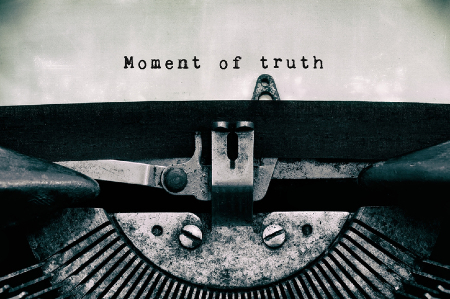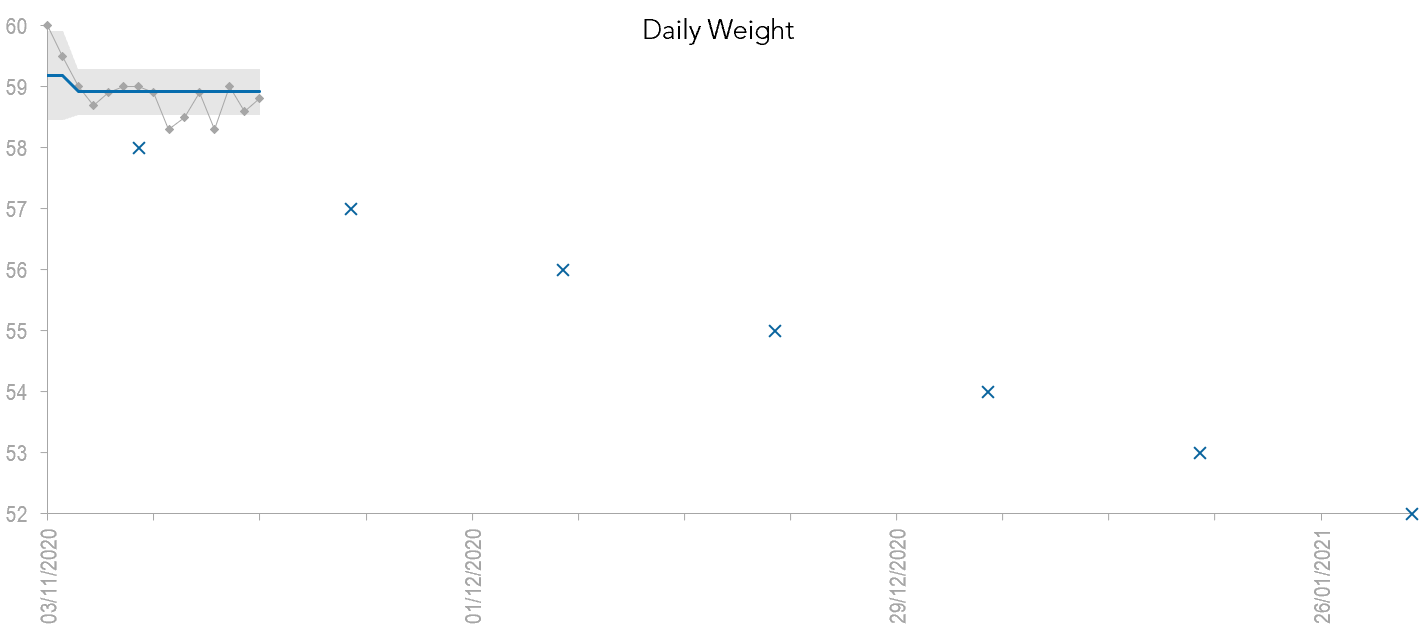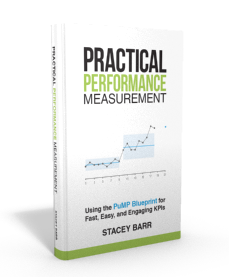Don’t Measure If You Don’t Want The Truth
by Stacey Barr |The truth from our performance measures can hurt, but if we don’t get that truth, we’ll never get where we want to go.

Never in my life have I been overweight, but never in my life have I been athletically lean. I have always had a lot of physical activity in my lifestyle, including running, yoga, dirtbiking, swimming, cycling, mountain biking, bouldering. And I’ve always struggled to get rid of the layer of – well, let’s call it ‘padding’ – that hides what I believe is a reasonable level of muscle tone underneath.
The only times I’ve successfully reduced that ‘padding’ is when I’ve measured my weight (daily) and my waistline (weekly). I know this, and yet I keep believing that I can get rid of that padding without measuring. But when I stop the measuring, my jeans eventually start feeling tighter.
Have you ever had a personal result that’s been a challenge for you to reach?
When the result is something we’re sensitive about, like our body weight, it can be really hard to face the undiluted truth a measure gives us. It took me a few weeks after feeling uncomfortable in my favourite jeans, to get brave and stand on the scales. OMG. I was heavier than I think I have ever been! That really stung.
And it was motivating at the same time. *Immediately* I stopped snacking, started eating slower (to feel full sooner), and reduced the carbs (based on a genetic test and personal experience, I do better on a high-fat and low-carb diet).
Without measuring, I realised, a few other forces surreptitiously take over:
- My husband’s eating habits influence mine, which is risky because he can eat until the cows come home (especially carbs) and never puts on weight.
- Because I am obsessed with efficiency, I will often rush to get more done, and when we rush our eating we often eat more because we don’t get the ‘full’ signal soon enough.
- I snack for fun (dark chocolate mud cake from my favourite cafe), for reward to motivate me through a hard task, and for comfort when I’m stressed.
The daily measure of my weight reminds me to stay aware of these, and take back control. An XmR chart of my daily weight also gives me quick feedback about which strategies are working, and which might not be. (And the satisfaction, when my weight does come down, kicks off a virtuous cycle of action and result.)
There are people who just don’t want the truth. But the price they pay is never getting the results they really want. I reckon this is one of the big reasons why some people won’t measure, neither personal results nor organisational results.
To make the truth of performance measures less painful for these people, it can help to start with something they’re less sensitive about. And help them realise the feeling of control far outweighs the pain of truth.
Don’t measure if you don’t want the truth. But if you don’t have the truth, don’t expect to have any control over your results.
[tweet this]
Connect with Stacey
Haven’t found what you’re looking for? Want more information? Fill out the form below and I’ll get in touch with you as soon as possible.
167 Eagle Street,
Brisbane Qld 4000,
Australia
ACN: 129953635
Director: Stacey Barr





